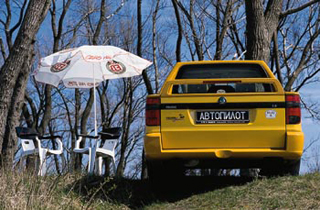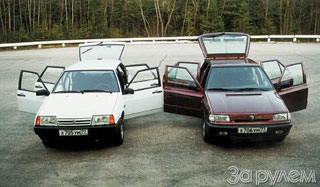Skoda Felicia 1995 test drive - 2001 -
Skoda Felicia
 The autopilot evaluates cars according to five main criteria. The amount of advantages is indicated +, disadvantages -. The next subject scored three + and two. This is Skoda Felicia
The autopilot evaluates cars according to five main criteria. The amount of advantages is indicated +, disadvantages -. The next subject scored three + and two. This is Skoda Felicia EXTERIOR. This year, Skoda Felicia marks five years. In 1997, she was restored. The standard equipment of LX has become a little richer in it now includes fog lights and bumpers painted in the color of the body. Plus, athermal glass and an additional stop-signal.
The body holds a blow well in both the literal and figurative sense. It has a minimum galvanizing bottom, thresholds and wheel arches. Loadings are recommended. High quality coloring. Rich color scheme. If there were no mechanical damage, there are no obvious foci of corrosion on two to three-year-old machines. The main trouble is a little clearance. 11 cm at the hatchback and 10 cm in combi. Carter protection, which goes as an additional service, is strongly recommended. Although it reduces the clearance by almost two centimeters. In principle, it is possible to use 14-inch discs and rubber. Helps a little. +++-
INTERIOR. The interior is spacious. A voluminous glove compartment opens upward, without creating problems for the knees of the front passenger. The rear seats fold, forming a spacious luggage platform. If desired, they can be easily removed from the car. Then the volume of cargo space increases in the hatchback from 270 to 965 cubic meters, and in COMBI from 447 to 1366. The benefit is 435 and 485 kg, respectively.
The finish captivates with its simplicity. The kingdom of gray plastic. I must admit that it is quite European quality, the elements are fitted and fixed neatly, not noticed knocks and creaks. The design is quite modern. Enough cozy. For those who want to make the salon more frantically, there are opportunities: a set of wood stickers (about $ 200), a central console with additional drawers and cup holders (about $ 100 with installation). ++++-
Equipment and ergonomics. Since 1997, LX versions have been equipped with a tachometer and electronic clock. In addition to them, a standard set of external lighting switches. Mirrors are adjusted manually in the GLX version of the electric drive. The simplest heater and ventilation provide quick heating of the cabin and good ventilation.
The seats are moderately hard and comfortable. The front is a little lacking the length of the longitudinal adjustment. The instrument panel is perfectly readable, the buttons and keys are large, easily reached and understandable. Light clutch pedal, clear gear shift. The steering wheel itself is convenient, but there is no vertical adjustment. The steering column is short, which is why the landing is slightly more vertical than we would like. ++++-
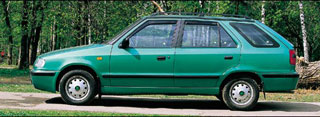
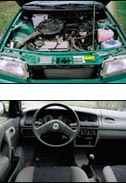
ROAD. The carburetor motor with a volume of 1.3 liters is enough to slowly move in space. It is better to forget about active ride. This low -speed and structurally outdated motor does not tolerate tense modes, sharp accelerations, etc. As a result, the axial backlash of the crankshaft and broken oil seals or leaks in sleeves are possible. With full loading of the machine, the voltage is already clearly noticeable. The version with a more modern Volkswagen 1.6-liter engine is more energetic, but in the manner of behavior, it resembles the products of the domestic auto industry.
The programs are long enough to carry out a smooth, without jerking acceleration. Which, combined with a low-speed engine, is quite comfortable in the city. The brakes are not bad, but the pedal is uninformative and in some cases requires increased effort.
The maneuverability is average. There is a delay in reaction to the actions of the steering wheel. At the beginning of the movement in the version without a hydraulic power steering, the steering wheel is heavy. Noticeable validity in corners, especially in COMBI. At speeds above 100 km/h, solid noises appear, for the most part of an aerodynamic nature. +++-
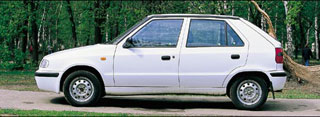
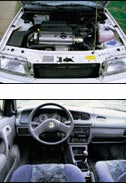
Features of national operation. Such cars in the West are called budget. In the sense of economical. In our conditions, the service will also not be ruined. The price of a norm-hour is on average $ 25.
A 1.6 l injector engine has proven itself perfectly. One but: does not tolerate the battery shutdown at home. The electronic damper loses memory, and, as a result, the engine stops holding the momentum, stalls on the go, etc. All work is only on the service.
Another thing is 1.3-liter. The lower camshaft, a three -threshold crankshaft, the chain drive of the timing, wet sleeves ... such an antediluvian structure is now not found on domestic low -commandments. He needs a regular (approximately 10 thousand mileage) adjustment of the gaps in the valve mechanism. And after 50 thousand, as a rule, it is necessary to change the whole drive of the timing (chain and stars). The lifting is not provided by the design. The kit itself costs inexpensively $ 17, but the replacement work takes 3 norm-hour.
Another problem is the engine: a carpet forms in the valve mechanism, the valve freezes and the bar flies out of the rocker. A very distinct knock appears. The reason for the use of low -quality oil. You should also observe the temperature of the engine: temperature sensors of the fan fan are out of order. As a result, overheating of the motor and replacement of the head (15 norm-hours).
In many troubles that are about with foreign cars in Russia, it is customary to blame the salt and quality of gasoline. A year later, with a mileage of 1525 thousand km, the carburetor is strongly polluted. Dismantling and washing the carburetor will cost $ 60. We recommend the 95th gasoline. Another carburetor trouble is directly related to salt: a gear, knowing the opening of the air damper as it warms up. For the same reasons, the rod of an accelerating pump is oxidized.
Other sores are common for all versions of Felicia. After a one-year operation, the checkpoint of the checkpoint is spent from the shaking, and the silent block of its reactive traction fails. It manifests itself in the form of a tangible blow when you press gas and release gas. Swarps should not be treated in the shortest possible time for $ 4.5.
Difficult inclusion of gears. The hinge connection of traction is to blame. It is treated with disassembly and lubrication in exchange for $ 7.5. However, if this case is launched, the procedure will cost more than $ 9 for the hinge itself and $ 12 for work. Another thing is much more unpleasant: the anthers are tended to crack. In order not to fly into a large amount, you should regularly control their condition and change the first signs of tears. This procedure is not cheap: the anthers themselves cost $ 1015, and the work will cost a kind of $ 7075.
The suspension, as practice shows, is generally strong and reliable. Walks 100 thousand and more. In addition to the upper supports of the front racks. This is a weak place. The details in the service will cost about $ 8, and work about 75. As a rule, there are no problems with the brake system. The front pads reliably serve 2025 thousand km, the rear about 60.
There is no exact data on the resource of the main nodes and assemblies, alas, alas. Although at one time, manufacturers reported that a 1.3-liter engine resource is 160 thousand km without overhaul. Practice shows that for its price category, the car is quite reliable. But the service does not leave the service without bread. +++-
Our sentence. The average car for the average user. A solid utilitarian means of moving in space and nothing more. By simplicity in circulation and running qualities, a version with a 1.3-liter engine is perfect for beginners and women. In terms of price/consumer qualities, it takes an intermediate position between the domestic ten and cars of a similar class of foreign production. The price of the LX version with a 1.6 engine is unjustifiably high. In general, +++-.
Text Andrey Timofeev, photo Alexey Ilyin
Source: "Autopilot"






